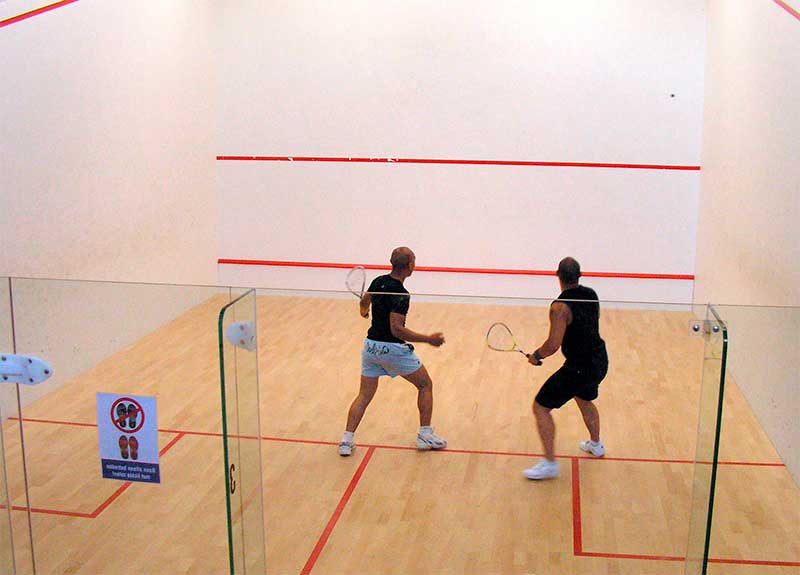Like all racket sports, squash is played 1-on-1, with players taking turns hitting the ball and the aim of the game being to win the rally (which starts with a serve). Here are some specifics.
- Both players share the same playing area
- The ball must be returned to the front wall: with the racket held in the hand; on the volley or after a maximum rebound on the floor; directly or indirectly (using the side walls or backglass).
Otherwise, the ball is considered a fault, which must be called by the referee.
The Serve
According to the Canadian Professional Squash Association some coaches and observers consider that the importance of the serve is underestimated: it should not simply be seen as a putaway, but as an opportunity to put the opponent in difficulty (as it is the only shot of which a player is in total control).
The first serve is designated by drawing lots (rotation of the racket and choice of the side on which it falls to the ground).
Players are allowed only one serve.
For the service to be correct:
- the server must have at least one foot in the service box
- the ball must touch the front wall directly between the service line and the top line
- the server must send the ball into the opposite backcourt.
Otherwise, the ball is considered a fault, which must be called by the referee.
- If the server wins the rally, he/she changes the service box
- If not, the receiver becomes the server and chooses the service court.
The referee announces “change” before giving the score.
The Boundaries Of The Court
During the rally, the ball is considered a fault:
- when it is carried or touches the striker’s racket twice consecutively or is hit after its second bounce on the ground (announced “doubled” by the referee)
- when it touches the top lines or goes over the top lines (called “out” by the referee)
- when it touches the TIN line or below this line (plate or ground) (called “down” by the referee)
- when it does not reach the front wall (called “doubled”, “down” or “out” by the referee depending on the situation).
It is obviously tolerated that a referee uses the term “foul” for all these situations.
The service line and the ground lines are only used for service.
Point Scoring
Each racquet sport has its own specific point scoring system. Since 2005 (2009 for women), official squash competitions have used the following system:
- When a player wins the rally, he/she scores 1 point
- To win a match, a player must win three 11-point games (note: some tournaments now use the two-game winning format)
- In the event of a 10-way tie, a two-point difference is required to win the game.
- The referee must call serves and foul balls as soon as they occur, using the appropriate announcements and thereby stopping the rally.
The correct order to follow when making an announcement is:
- announcement of the fault (down, out, fault, doubled) or the referee’s decision following an appeal or request for a let (see below, yes Let, no Let, stroke, the ball is good, etc.)
- announcement of the score itself by first giving the server’s score and the change if the server takes over the service (Change, 9-4)
- announcement of the comments on the score (game ball, 2 points difference, match ball).
Safety Rules
The authorities of the discipline advise all players to wear glasses or eye protection (which are compulsory for young players in competition). In addition, there are rules to ensure safety:
The player who has played the ball must make as much effort as possible to get out of the way after the shot so as not to impede his opponent.
If, during a rally, the striker is hindered in his movement to reach the ball or risks touching his opponent with the racket or the ball, he must stop play and ask for a let.
The referee determines whether:
- the let is granted (the rally is resumed)
- the let is refused (no let, minimal interference, rally won by the opponent)
- a stroke is awarded (rally won for the player who requested the let).

